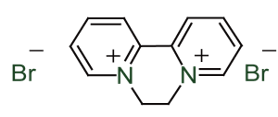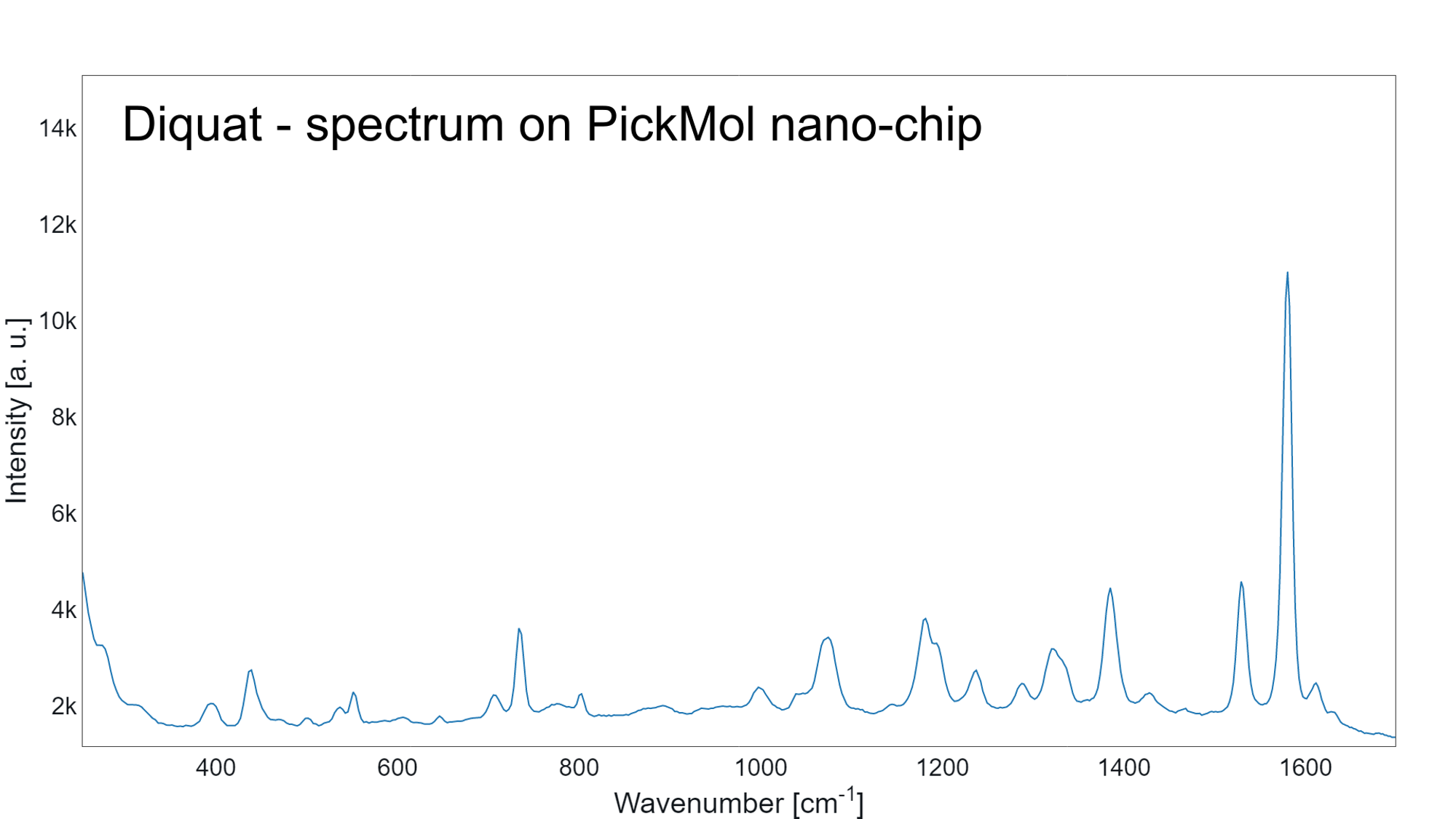Molecular Database
Diquat
MW: 362.06 g/mol
CAS Number: 85-00-7
Use and production
Diquat (1,1′-Ethylene-2,2′-bipyridyldiylium dibromide) is a contact desiccant and herbicide. It is highly soluble in water, has a low risk of leaching to groundwater and is volatile. It is very persistent in soil but rapidly degrades in aquatic systems.
Diquat is an unusual herbicide because it is often not used for weed control but is instead applied directly on mature crops. This causes desiccation, making the crop easier to harvest, particularly with mechanised equipment. The advantage to the farmer can be to advance the harvesting date, reduce the time taken to harvest and, in the case of seed crops, reduce the moisture content of the seed and increase its useful yield.
Diquat is also used in New Zealand and California for many decades for submerged (underwater) weed control.
Toxicity
Diquat dibromide is moderately toxic. It may be harmful to humans if swallowed, inhaled, or absorbed through the skin in large quantities. Its chronic neurotoxic effects have been investigated. It is moderately toxic to birds, most aquatic organisms, honeybees and earthworms.
Diquat bonds strongly to mineral and organic particles in soil and water, where it remains without significant degradation for years. However, bound to clays, diquat is biologically inactive at the concentrations typically observed in agricultural soils.



